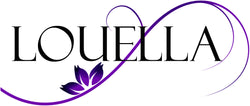Opals are the birthstone for October and also the stone to celebrate 14 years of marriage. The name opal is thought to be derived from the Greek derivative “Opallios,” meaning “to see a change of colour.”
Opal is a delicate and soft stone, rating a 5.5 to 6.5 on the MOHS scale. It is usually milky and translucent. Opal is a hardened silica gel containing 5-20% water. Some opals may crack if allowed to dry out too rapidly after being mined. Opals may be somewhat porous; in which case it is dangerous to immerse it in liquids other than water. Opal is amorphous, meaning, it has no crystal structure.
Opal is formed when silica was liquefied and washed down into fissures in the surrounding rock, where it then solidified into a hardened gel. Unlike most other gemstones, opal is therefore not a crystal, but rather an amorphous solid. Opal is found in fossilised shell, wood and bone. Some precious opal forms in gas cavities in volcanic rocks, as in Mexico, and Slovakia, but most Australian deposits occur in sedimentary rocks. It is not found in many ancient archaeological diggings for a good reason, as the stones do not last for thousands of years. They contain 5-20% water, which dries out over the years, causing them to become brittle and lose their hardness.
Opals are often rumoured to be bad luck, this unfortunate reputation and myth actually is the fault of one man, Sir Walter Scott, his novel, Anne of Geuerstein, written in 1829, was the story of Lady Hermione, who dies shortly after a drop of holy water falls on her opal and destroys its colour. The public took this to mean that the author was warning of the bad luck an opal can bring, so they stopped buying the beautiful gemstone. This turn of events destroyed the European opal market for almost 50 years!

